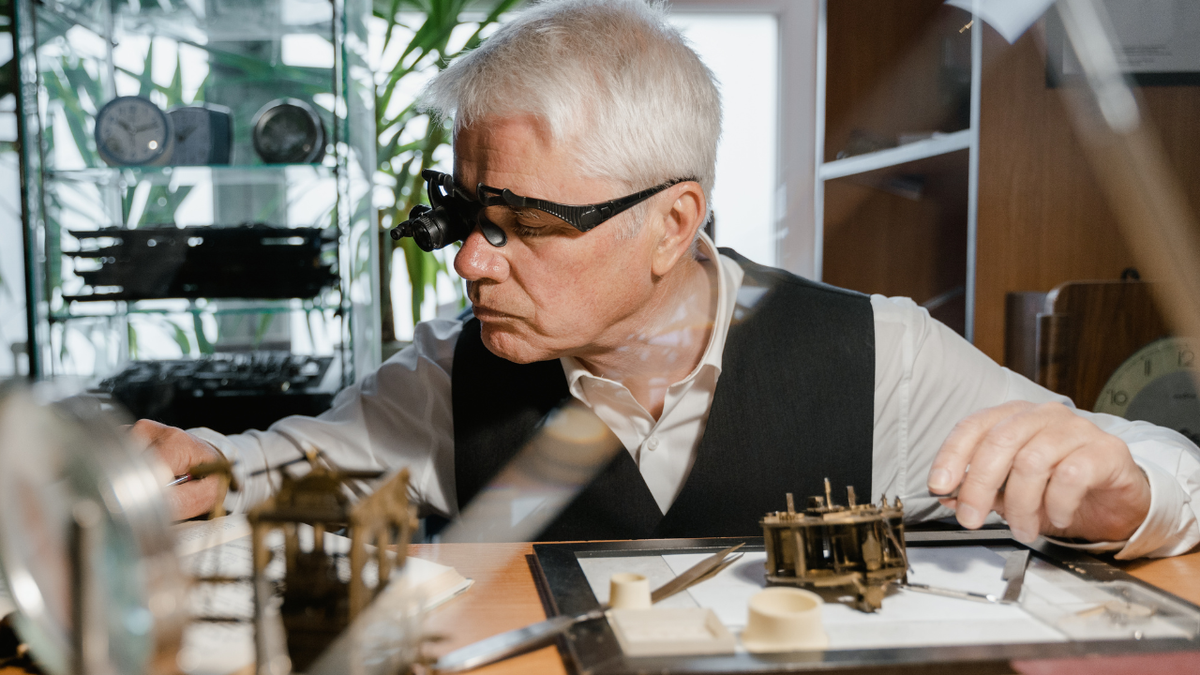
Moisture in Your Watch? How to Fix Water Damage and Know When to Call a Pro
|
|
Time to read 4 min


|
|
Time to read 4 min
As a watch collector who has spent years admiring, acquiring, and caring for these intricate machines, I can tell you that few things are as disheartening as discovering moisture trapped inside your beloved timepiece. Whether it’s a subtle mist beneath the crystal or visible water droplets, this unwelcome guest can quickly compromise your watch’s performance and long-term health. However, with the right knowledge and timely action, you can often address this issue effectively and protect your valuable investment. Today we’ll talk about how to tackle moisture in your wristwatch, covering both effective DIY solutions and knowing when it's time to call in a professional.
You might wonder, "How did water even get in there?" It's a question every collector eventually asks. One of the most common culprits is a sudden extreme temperature change. Imagine stepping from a warm, air-conditioned room into a humid, hot summer day, or putting on a cold watch in a warm coat. Just like condensation forming on a cold glass of water, this rapid temperature shift can cause moisture-laden air inside your watch to condense on the cooler crystal.
Another frequent cause is simply a pulled-out or unsecured crown. That tiny gap, easily overlooked, becomes an open invitation for moisture during a simple hand splash or even in humid conditions. Beyond human error, the protective gaskets and seals designed to keep water out can degrade over time due to wear and tear. This is particularly true for watches that regularly experience water exposure, whether through swimming or other activities. Even a hairline crack on the watch glass can be enough to let moisture seep in, often going unnoticed until the fog appears. Understanding these entry points is the first step in both removing existing moisture and preventing future issues.
Once you spot that tell-tale fog, acting promptly is crucial to prevent corrosion and damage to delicate internal components. First, immediately remove the watch from your wrist and gently wipe its exterior with a soft cloth. If possible and safe for your watch, remove the band and open the crown to the time-setting position to facilitate air circulation.
I’ve seen many people mention using a gentle heat sources like a hairdryer on a low setting or a fan. But to me this isn’t worth the risk. If you feel that the appling heat is your best remedy, than you’re probably at the point where you should seek a watch repair expert.
As saving money and handling things myself, there comes a point where professional intervention isn't just recommended—it's essential. If, after attempting home treatments, moisture persists, or if you notice fogging that keeps coming back, it's a clear sign that the problem runs deeper.
Professional watchmakers have the tools and expertise to fully disassemble, clean, lubricate, and replace damaged seals and gaskets. This ensures thorough drying, restores water resistance, and prevents future issues, often preserving your warranty. Trying extensive repairs yourself without the proper knowledge can easily void warranties or worsen the damage.
An ounce of prevention is worth a pound of cure, especially with watches. The most fundamental step is to know your watch's water resistance rating. Don't mistake "water-resistant" for "waterproof" – no watch is truly 100% waterproof under all conditions. Ratings like 30M mean protection from a casual splash, not for swimming. A 50M rating might be okay for recreational swimming, but not regular sessions or diving. For serious swimming and snorkeling, aim for 100M, and for diving, 200M or higher is necessary.
Always ensure the crown and any pushers are fully secured before exposing your watch to water or humidity. Simple as it sounds, a loose crown is a common ingress point. Furthermore, avoid exposing your watch to rapid temperature changes. Allowing your watch to adjust gradually when moving between extreme hot and cold environments can significantly reduce the chance of condensation forming.
Finally, regular maintenance and proper storage are key. Periodically inspect and replace gaskets and seals, especially after battery changes or service. Store your watches in dry, temperature-controlled environments, ideally with silica gel packs, to prevent humidity buildup.
In conclusion, discovering moisture in your watch can be a heart-stopping moment, but it doesn't have to be a death sentence for your timepiece. By understanding the common causes, taking prompt and appropriate DIY actions like using silica gel, and recognizing when to entrust your watch to a professional, you can effectively resolve most moisture issues. Also, make sure to check your watch's rating, keep those seals healthy, and don't hesitate to seek expert help when needed. Your cherished timepiece will thank you.


